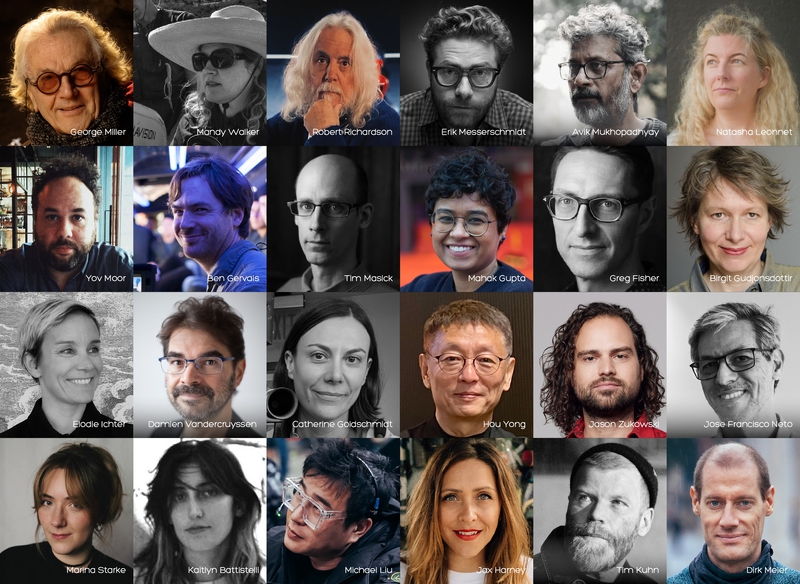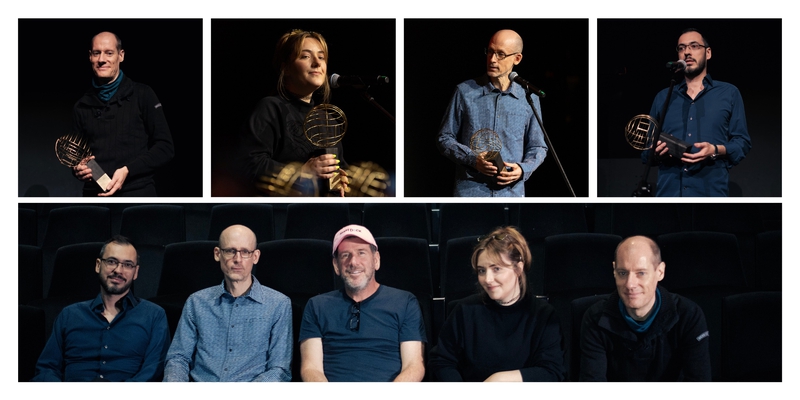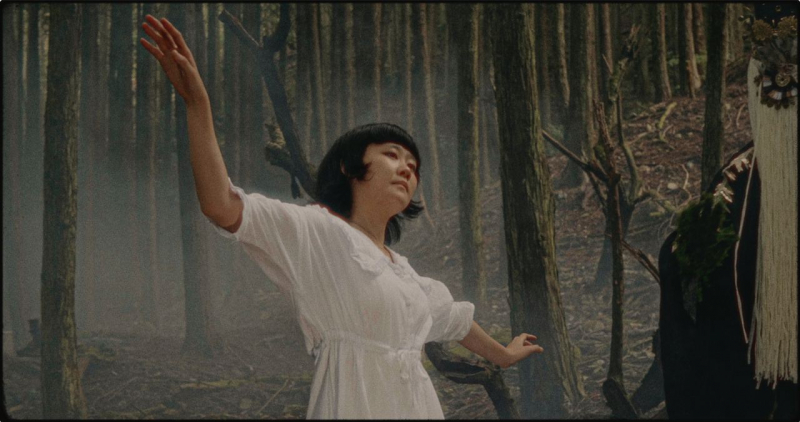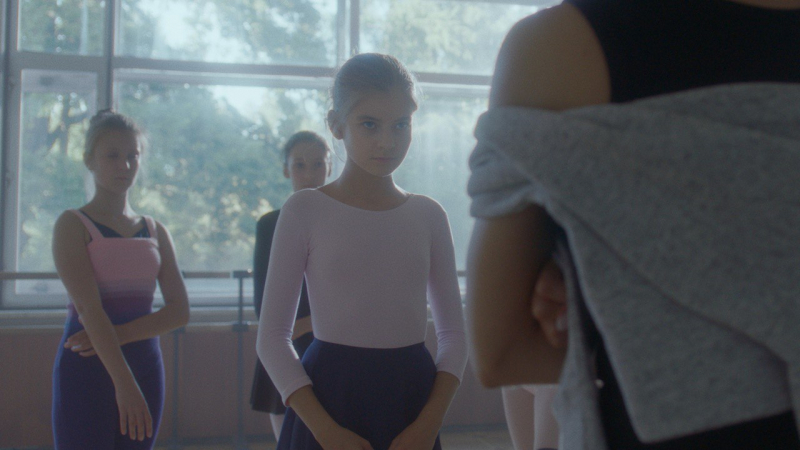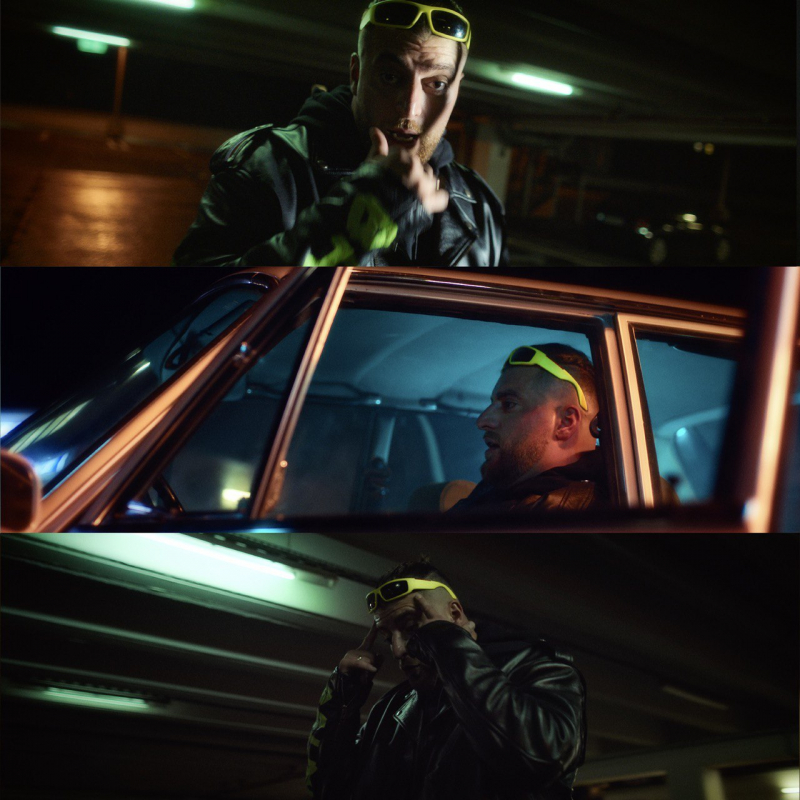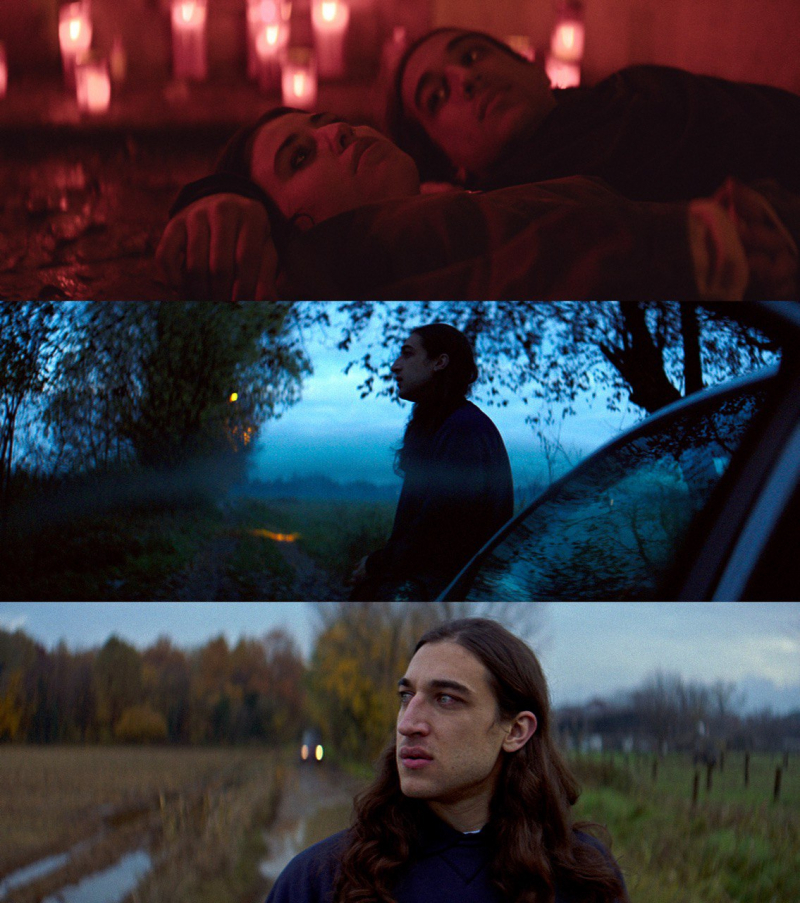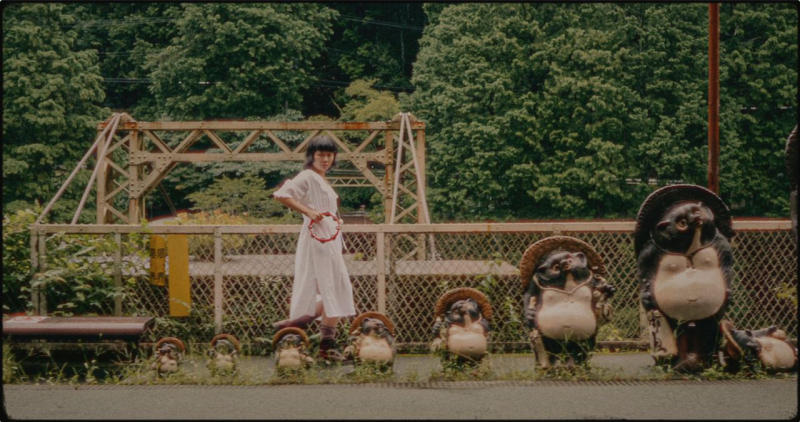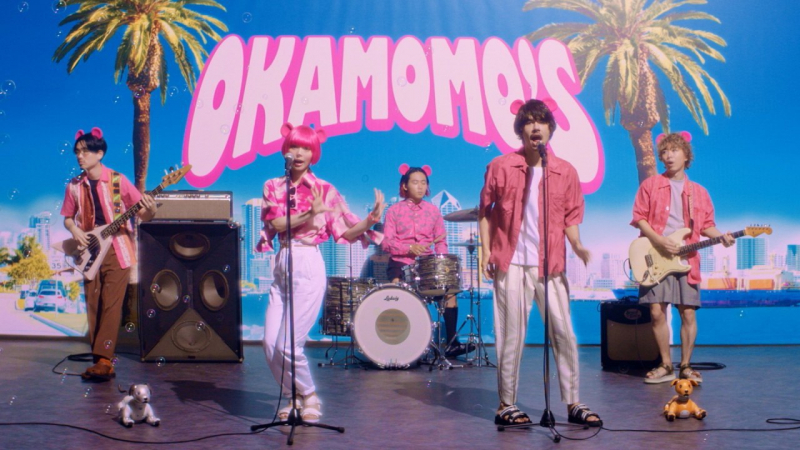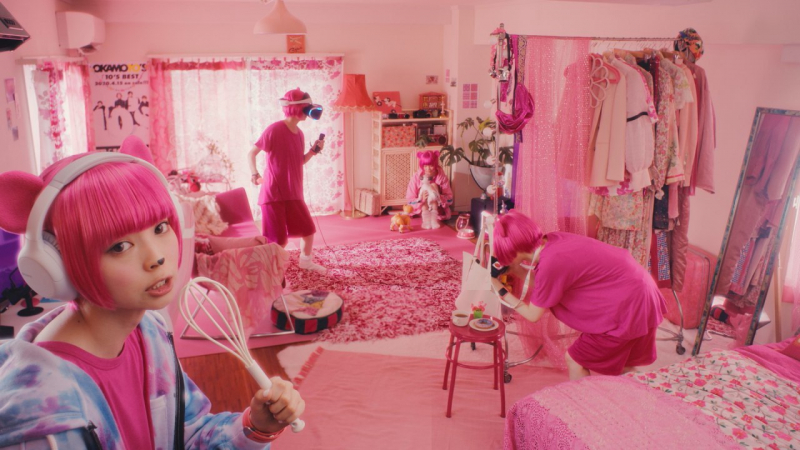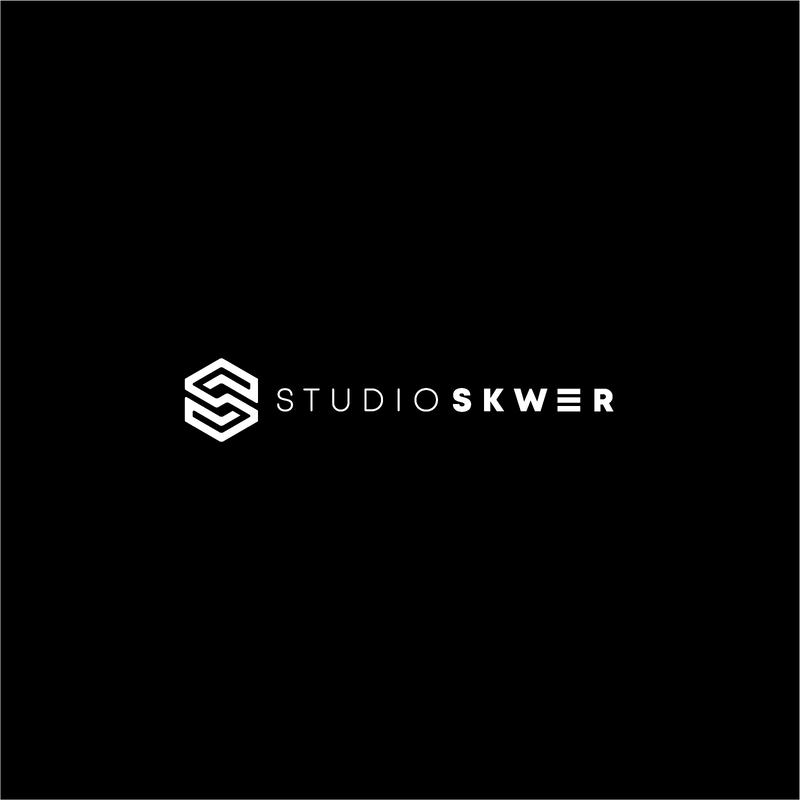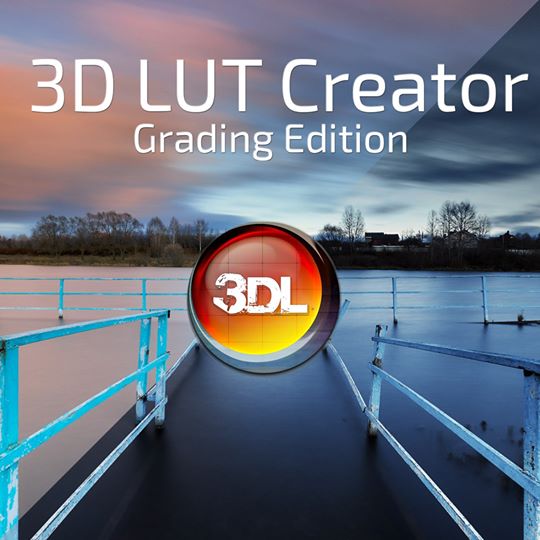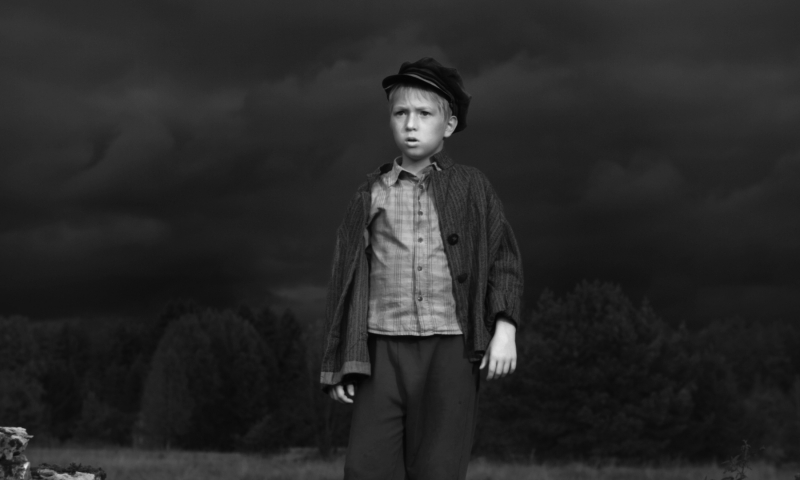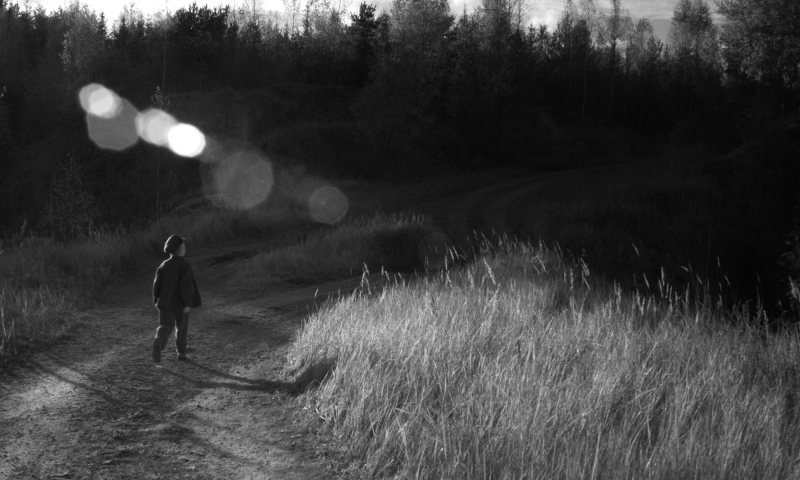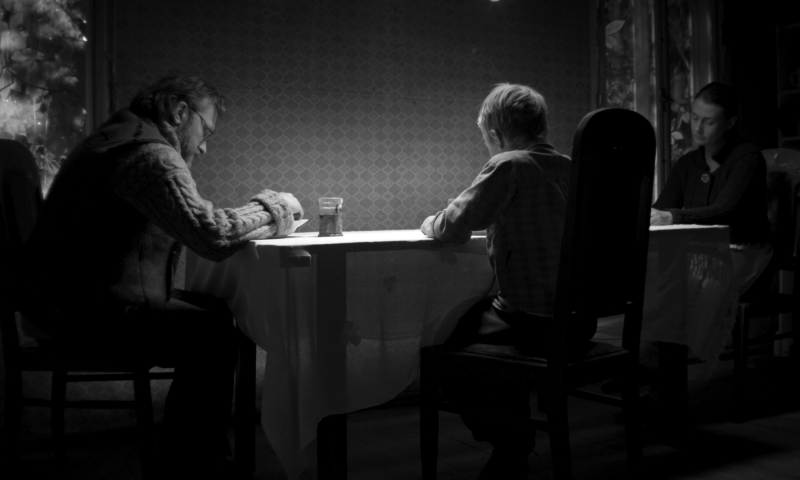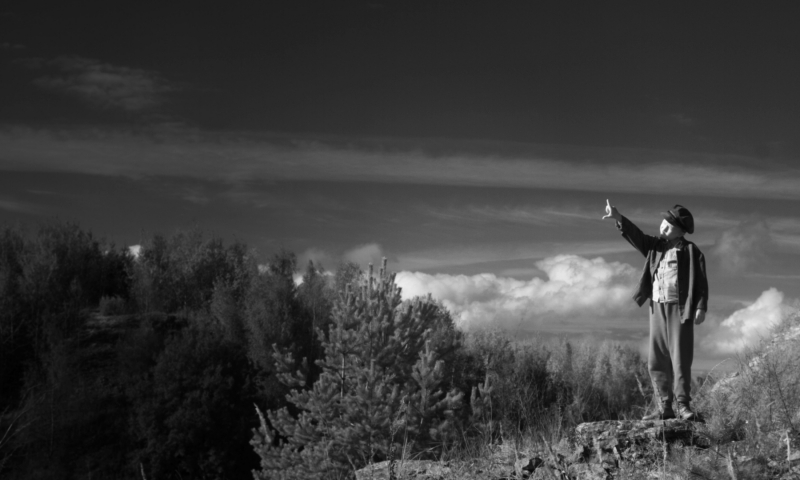Search the Community
Showing results for tags 'colorgrading'.
-
FilmLight completes highly-esteemed jury, naming Mandy Walker as jury president and George Miller as guest of honour LONDON — 18 July 2024: FilmLight has finalised the prestigious jury for the 2024 FilmLight Colour Awards and announced Australian film director, screenwriter and producer, George Miller, as guest of honour, and award-winning Australian cinematographer, Mandy Walker, as 2024 jury president. George Miller, AO, is known for directing the dystopian action-adventure films Mad Max (1979), Mad Max 2 (1981) and Mad Max Beyond Thunderdome (1985), Mad Max: Fury Road (2015), which went on to win six Academy Awards with Miller receiving a nomination for the Academy Award for Best Director, and Furiosa: A Mad Max Saga (2024). Other projects include The Witches of Eastwick (1987), Babe (1995), Happy Feet (2006) and more. “Just as slow-drying oil-based paint allowed renaissance art practice to become more iterative, so have the digital tools of the colourist expanded the plasticity of each frame of moving image,” comments Miller. Mandy Walker, AM, ASC, ACS is an Australian cinematographer known for work on Elvis (2022), Mulan (2020), Hidden Figures (2016), Tracks (2013), Australia (2008) and more. “I am honoured to be presiding over this jury in the company of such revered film makers from all around the world,” says Walker. “It’s very exciting to have the opportunity to showcase the talent and scope of artists working in the field of colour timing.” FilmLight also welcomes the following international talent to complete this year’s highly prestigious jury: Kaitlyn Battistelli – senior colourist and partner at ETHOS STUDIO in LA. Kaitlyn is known for her fun and vibrantly hued films across a diverse range of platforms and her work has earned her numerous awards and acclaim. Her work on the feature film Dìdi, won the U.S. Dramatic Audience Award at the 2024 Sundance Film Festival. Greg Fisher – senior colourist at Company 3, London. Fisher is among the world’s most sought-after colourists and a pioneering technologist in the field of image development. Recent work includes Yorgos Lanthimos-directed Poor Things (2023), which has received multiple awards and The Book of Clarence (2023). Jose Francisco Neto – senior colourist and founder of DOT in São Paulo. His work spans a wide range of projects, from short films and feature films to major episodic productions like Disney's Aruna's Magic. He has also served as a post-production supervisor and VFX supervisor on various projects, which contributes to his unique perspective as a colourist. Catherine Goldschmidt – award-winning cinematographer known for her work on the 12th Season of Doctor Who, the Emmy-nominated show Dummy, the critically acclaimed BBC/Amazon series Chloe and HBO’s hit series House of the Dragon, for which she was nominated for a 2023 Emmy Award and the ASC Award for Outstanding Cinematography in a One Hour Television Drama. Birgit Gudjonsdottir – award-winning Icelandic cinematographer with an extensive career in commercials, documentaries, and feature films since the late 1980s, including Goodbye, Lenin! (2003) and The Bourne Supremacy (2004). The first feature film she shot, Jargo (2004), premiered at the Berlinale in 2004. Jax Harney – founder and senior colourist at X-LDN in London. With over two decades in advertising, Harney is known for her innovative approach and work with luxury brands in commercials, television, and film. Yong Hou – acclaimed Chinese cinematographer, director, professor at the Shanghai Theatre Academy, doctoral supervisor, and president of the Chinese Society of Cinematographers. Hou is celebrated for films such as Jasmine Women (2004) and Manifesto (2023) and for his collaboration with director Zhang Yimou. He has received multiple Golden Rooster Awards and international recognition. Tim Kuhn, BVK – award-winning German cinematographer, known for his influential work on series like Breaking Even (2020) and amazon series Luden (2023). Kuhn is a member of the German BVK and the German film academy and his projects, Dear Mr. Führer (2022) and Luden (2023) have both been winners at the FilmLight Colour Awards. Michael Liu – distinguished Chinese cinematographer, who has developed a reputation for his innovative visual storytelling and his ability to blend traditional Chinese aesthetics with modern cinematic techniques. Liu's portfolio includes a diverse array of films and his notable works include The Wandering Earth series. Tim Masick – senior colourist at Company 3, New York. Masick co-founded Company 3 New York in 2002 and is known for pushing the boundaries of what is possible in colour grading. Masick won the Commercial award at the FilmLight Colour Awards in 2023 (Zara Man SS23) and 2021 (Dior Spring Summer 2021 Collection). He has worked on a wide variety of commercials for top directors and cinematographers and an impressive list of major global brands, including luxury fashion and beauty campaigns and projects. Avik Mukhopadhayay – esteemed Indian cinematographer known for his work with directors like Mrinal Sen and Aparna Sen. Mukhopadhayay has received numerous accolades, including two Filmfare Awards for Best Cinematography. Marina Starke – Berlin-based senior colourist with a notable portfolio in feature films, series, commercials, and music videos. Starke is a five-time FilmLight Colour Awards nominee and 2023 Music Video winner for her work on Horra by Mayyas. Jason Zukowski – senior colourist at Fort York VFX in Toronto. Zukowski worked as a DoP, editor, and director before finding his niche in the world of colour grading. He has contributed to award-winning commercials and collaborated with top directors and brands. These talented creatives join the previously announced jury members to complete this year’s jury: Ben Gervais – freelance technical producer; Mahak Gupta – senior colourist at Bridge PostWorks; Elodie Ichter – senior colourist at Light Iron; Natasha Leonnet – senior colourist, Picture Shop; Dirk Meier – freelance colourist, lecturer and 2023 FilmLight Colour Awards winner; Erik Messerschmidt, ASC – cinematographer; Yov Moor – senior freelance colourist; Robert Richardson, ASC, ACK – cinematographer; and Damien Vandercruyssen – senior colourist at Harbor. The FilmLight Colour Awards are open to colourists on any grading platform and close for entry on 31 July. A shortlist will be announced in autumn and the winners unveiled at EnergaCAMERIMAGE in November. For more information, please visit: www.filmlightcolourawards.com/ ###
-
- filmlightcolourawards2024
- colourawards
- (and 7 more)
-
Award-winning cinematographers Mandy Walker, Robert Richardson and Erik Messerschmidt amongst talented worldwide jury FilmLight today announced the first set of high-profile creatives lined up to judge the 2024 FilmLight Colour Awards, including cinematographers Mandy Walker, Robert Richardson and Erik Messerschmidt. The awards are presented annually at the international film festival EnergaCAMERIMAGE in November. Following her participation in the 2023 ceremony panel discussion with Lawrence Sher, first to join this year’s jury is Australian cinematographer, Mandy Walker, AM, ASC, ACS. Walker is best known for her work on Elvis (2022), Mulan (2020), Hidden Figures (2016), Tracks (2013), Australia (2008), Shattered Glass (2003), Australian Rules (2002), Lantana (2001), The Well (1997) and Parklands (1996). “I really appreciate the artistry of great colourists,” comments Walker. “They help the cinematographer enhance the storytelling with colour, contrast, light and darkness – creating atmosphere and focusing the audiences’ gaze to what’s important in the frame. I will be looking for consistency and colour that is not too ‘affected’, but seamlessly works with and not against the elements of the story.” Also joining this year’s jury is renowned American cinematographer, Robert Richardson, ASC, ACK. Richardson, who has won the Academy Award for Best Cinematography three times, for his work on Hugo (2011), The Aviator (2004) and JFK (1991), is a regular collaborator of Hollywood directors like Oliver Stone, Quentin Tarantino and Martin Scorsese and known for his use of high contrast lighting, shapeshifting style, dynamic camera movements and keen eye for detail. “Judging the work of a colourist is complex, as there are many factors that play a part,” says Richardson. “For example, how early was the colourist involved? Did they create a LUT to use in camera or during post? What was their relationship with the director of photography? What is their history? With this in mind, the process of judging for me will be based on the information they provide about the project as well as how well the visuals support the story. I am excited to take part, as the colourist is pivotal to my work and I have immense respect for the creativity involved.” Also joining this year’s jury is cinematographer Erik Messerschmidt, ASC, who recently had two feature films premiere at the 2023 Venice Film Festival – David Fincher's The Killer and Michael Mann's Ferrari. He also shot Fincher’s series Mindhunter (2017-2019) and feature film Mank (2020). FilmLight is also delighted to welcome the following talented creatives to the 2024 jury: Yov Moor – senior freelance colourist in France, whose work encompasses award-winning feature films, documentaries, art films and shorts. In 2024, Moor had four films at Cannes: Miguel Gomes’ Grand Tour, Gilles Lellouche’s L’Amour Ouf (Beating Hearts), Keff’s Locust andWei Liang Chiang’s Mongrel. Natasha Leonnet – senior colourist at Picture Shop based in LA and recipient of numerous prestigious accolades. Leonnet’s work includes Spider-Man: Across the Spider-Verse (2023), Billie Eilish: Happier Ever (2021), Candyman (2020), Mulan (2020), First Man (2018), Hidden Figures (2016) and Whiplash (2014). Mahak Gupta – senior colourist at Bridge PostWorks in India and a 2022 FilmLight Colour Awards ‘Spotlight’ nominee for her work on Shoebox (2021). Gupta is also the co-founder of ‘The Colorists Workshop’ development program designed to support and recognise aspiring colourists in India. Elodie Ichter – senior colourist at Light Iron in New York, who recently completed the grade on Hulu’s Shōgun (2024). Born and raised in France, Ichter’s career path took her to London and Los Angeles before New York where she worked with renowned directors such as Martin Scorsese, Quentin Tarantino, Chloé Zhao and Ben Affleck. Damien Vandercruyssen – senior colourist at Harbor, based in New York. Damien's expertise in cinematography and colour science have earned him regular collaborations with highly regarded directors such as Sofia Coppola, the Safdie brothers and Trey Edward Shults, along with leading cinematographers Philippe Le Sourd, Drew Daniel and Darius Khondji. His work on Apple TV+'s Lisey's Story (2021) won him the ‘TV/episodic’ award at the 2021 FilmLight Colour Awards. Ben Gervais – technical producer in Canada. Gervais is a pioneer in high frame rate and 3D workflows and developed 120fps production, post, distribution, and projection technology for Ang Lee's Gemini Man (2019) and Billy Lynn’s Long Halftime Walk (2016). Dirk Meier – freelance colourist and lecturer in Germany. Meier won the ‘Episodic’ award at the 2023 FilmLight Colour Awards for his work on season one of The Pimp: No F***ing Fairytale (OT: Luden). In 2024 colourists will be awarded across six categories: theatrical feature; television series/episodic; commercial; music video; Spotlight, which recognises colourists who have worked on a lower budget feature film or television movie; and, new for 2024, Emerging Talent, which celebrates the work of young colourists (age 18-35) in commercial and music video creation. The remaining jury will be announced in the coming months with this year’s call for entries closing on 31 July. A shortlist will be announced in autumn and the winners unveiled at EnergaCAMERIMAGE in November. For more, visit: www.filmlightcolourawards.com.
-
- filmlight
- filmlightcolourawards2024
- (and 7 more)
-
Entries open from 1 May - 31 July to colourists on any grading platform LONDON — 23 April 2024: The FilmLight Colour Awards return for the fourth year in 2024 with an additional new category dedicated to rising talent. The awards, which will once again be presented at EnergaCAMERIMAGE in November, are independently judged by a panel of prominent creatives, cinematographers and colourists. New for 2024, the ‘Emerging Talent’ award will recognise and celebrate the work of young colourists (age 18-30) who have worked on a commercial or music video project aired between 1 September 2023 and 30 September 2024. “The next generation of colourists is critical to the future of our industry,” says Jacqui Loran, co-director at FilmLight. “We have introduced this award to help support and encourage these emerging young talents – shining a light on their work and helping them to form a path into the industry.” The new category sits alongside the existing five: theatrical feature; television series/episodic; commercial; music video; and Spotlight, which recognises colourists who have contributed to the creative impact of a low budget feature. The awards are led and organised by FilmLight, in conjunction with EnergaCAMERIMAGE. “In 2021 we welcomed the FilmLight Colour Awards into the EnergaCAMERIMAGE Film Festival programme and we have enjoyed watching the success of the awards and the partnership grow year-on-year,” says Marek Žydowicz, EnergaCAMERIMAGE Founder and Director. “We continue to receive positive feedback about our joint efforts to shine a light on the work of the colourist and their invaluable collaboration with the cinematographer. We can’t wait to do it again this year.” For 2024, FilmLight also welcomes four new supporting partners: ShotDeck (fully-searchable cinematic image library), AMC (Mexican Society of Cinematographers), BVK (German Society of Cinematographers) and ISC (Indian Society of Cinematographers). They join the growing list of long-standing supporters, including: AFC (French Society of Cinematographers), ASC (American Society of Cinematographers), BSC (British Society of Cinematographers), CNSC (Chinese Society of Cinematographers), CSI (Colorist Society International) and more. You can watch highlights from 2023 in the 2024 teaser video, here. Colourists, production companies and facilities are invited to put forward their nominations when entries open on 1 May 2024, with a final deadline for submissions on 31 July 2024. For more information on the awards, including category guidelines, please visit: www.filmlightcolourawards.com ###
-
- filmlightcolourawards
- filmlightcolourawards2024
- (and 6 more)
-
Hello Guys! Dehancer https://www.dehancer.com/ is a film emulation plugin for Davinci Resolve, currently available for Mac users only. Works with: DaVinci Resolve 15 and later Mac OS Mojave 10.14 and later Metal-enabled GPU For many years we are running a film laboratory in Moscow https://sreda.photo, where we sell, develop and print film, both for photo and movie. Last 4 years we spent developing a plugin that emulates the processes and behaviour of a real film. It's not the LUT, it's a much more complex set of tools based on precisely measured analogue processes. Pro version includes Input camera profiles 52 Film profiles Expand tool Print options CMY Color Head Film Grain Bloom Halation v2 Defringe Vignette False Colors LUT Generator ACES support For our friends from Lowepost, we offer a 10% discount promo code DEHANCERIT10 for any product in our store. You can download a full version with watermark of our plugin on the website without registration. If you are a professional colorist and would like to receive a two weeks full trial to check on a real-life project, send us a private message here with your email and we will send you a license key shortly. Or reach us by email marketing@dehancer.com You can find more detailed information about the plugin in our blog https://blog.dehancer.com/articles/ Subscribe to our Instagram and youtube page https://www.instagram.com/dehancer.film/ https://www.youtube.com/channel/UCsvgRJwcWFYNNMuhXkxR3Gw If you have any questions please feel free to ask!
- 73 replies
-
- 1
-

-
- colorgrading
- film
-
(and 2 more)
Tagged with:
-
Job description for Senior Colorist Studio Skwer invites Colorists around the world to submit their portfolios/showreels to be considered for the opportunity to collaborate with the Studio Skwer team. We currently have a position open for a full time Colorist, in our facility located in Mumbai- India, responsible for colour grading a wide range of visual contents, primarily for advertising, OTT and Feature films. Studio Skwer is looking for innovative and passionate Colorist who can create edgy, new age look and style. Work at the heart of the post- production industry, you will have an opportunity to collaborate with the top filmmakers and advertising agencies to make your mark as an artist, embracing different artistic color grading styles and methods. Experience in high-end colour grading process, with an 'impressive showreel'- (preferable advertising reel) Practical and technical knowledge of HDR, 4K, P3 and SDR delivery workflows from ACES pipelines (HLG, DolbyVision, etc.) Indepth understanding of most up-to-date colour grading techniques and technologies. 3 to 8 years of professional working experience Expert level skills with Davinci Resolve Excellent communication skills with both clients and colleagues. For further question/ information, please write to us at the following email address: color@studioskwer.com Apply for this position: https://www.linkedin.com/jobs/view/3342459790 About- Studio Skwer An artist collective company with a vision to enable and articulate value for the art of colorgrading and finishing through next – gen visual experience! Instagram: https://www.instagram.com/studioskwer Linkedin: https://www.linkedin.com/company/studioskwer
-
- advertising
- baselight
-
(and 5 more)
Tagged with:
-
Client: Bolt Production Company: Get Shot Films Producer: Kadi Freja Felt Director: Janar Aronija Cinematographer: Martin Venela Colorist: Margus Voll, CSI, ICG Posthouse: Iconstudios.eu Arri Mini, DaVinci Resolve, ACES
-
- coloristsociety
- arrialexa
- (and 11 more)
-
FilmConvert is launching our new plugin CineMatch, designed for all filmmakers working with footage from multiple camera sources. CineMatch helps you quickly and easily match footage from over 50 different cameras and manufacturers, including Sony, Canon, Blackmagic Design, Panasonic, Nikon, RED, DJI, Arri and more. CineMatch works as a plugin in Adobe Premiere Pro and DaVinci Resolve, and we're planning to expand support to FCPX in the coming months. We'd love you to check out the free trial available at www.cinematch.com and gives us your feedback so we can continue to improve the matching tools and provide an even better experience for editors and color graders out there.
-
Can I use colorspace transform instead of a conversation lut ? What are the differences here? I am hoping someone will shed some light on this for me. Thanks
- 2 replies
-
- colorist
- colorspace
-
(and 1 more)
Tagged with:
-
Hi all, here is a video that shows how to set up ScopeBox with Assimilate SCRATCH, Live Looks, Live Assist and Play Pro for advanced video measuring: Cheers, Mazze
-
- 1
-

-
- assimilate
- scratch
-
(and 8 more)
Tagged with:
-
ALL, We hope you all are healthy and safe during these times. If you are working from home, If you need to connect with people remotely, If you have some time to learn new things, We are here to help, with the ASSIMILATE Creative Boost! As of today, we are offering all of our products for FREE until the end of October 2020! Yes for FREE! Register for your FREE licenses here: https://bit.ly/2KqOImf Use, Learn, Enjoy! All of our products are FREE until October 31, 2020! Check out online tutorials: https://www.youtube.com/channel/ASSIMILATE FREE access to Lowepost online SCRATCH Training: https://lowepost.com/promotions/scratch Stay tuned for more information coming to you as we go online and interactive to help with knowledge!
- 1 reply
-
- 1
-

-
- assimilate
- scratch
-
(and 5 more)
Tagged with:
-
Hi all, with the release of SCRATCH 9.2, we also announced two new on-set tools: Live Looks and Live Assist. These 3 videos should give you a good idea on what they do 🙂 . https://vimeo.com/398016321 https://vimeo.com/397381848 https://vimeo.com/397679642 And for those into reading press releases - here it comes: Assimilate Streamlines On-Set Production with New Software Ecosystem for Live Grading, Video-Monitoring and Dailies Launches Live Looks and Live Assist Tools to Optimize Camera to Post Workflows March 17, 2020 – San Jose, CA – Assimilate today announced Live Looks and Live Assist, advanced tools for on-set production, which give media professionals the speed and specialized features for on-set live grading, look creation, advanced video monitoring and recording. Live Looks provides an easy to set up environment for video monitoring and live grading, supporting any resolution from standard HD up to 8K workflows. Packed with professional grading and FX / green-screen tools, it is straight forward to operate and offers a seamless connection into the dailies and post workflows. With Live Looks and Live Assist being available on both macOS and Windows, users are for the first time completely free to go with their platform and hardware of choice. Running on anything from a laptop to a full-blown on-set DIT rig, Live Looks provides LUT-box control, supporting Flanders, Teradek and TVLogic devices. It also supports video-io from AJA, Bluefish444 and Blackmagic for image and full camera metadata capture. Direct reference recording to Apple ProRes, makes it the only tool of its kind available on macOS and Windows. Live Looks goes beyond LUT-box control, the user can process the live camera feed via video-io, allowing for more advanced grading and comparing looks, managing all metadata, annotate camera input and generate production reports. Its fully color managed environment ensures the looks created will come out the same in dailies and post. Live Looks provides a seamless path into dailies and post with look-matching in SCRATCH and CDL-EDL transfer to DaVinci Resolve. Assimilate brings its high-end grading toolset - beyond Lift, Gamma, Gain and CDL: Powerful Curves, and easy-to-use Color Remapper to Live Looks. On-set previews can go beyond just color to include real-time texture effects like Grain, Highlight Glow, Diffusion and Vignette -- all GPU accelerated. Advanced chroma keying to replace green-screen backgrounds with just two clicks makes for the easiest and quickest way to set up and preview a green-screen set. This ensures proper camera angle, green-screen tracker/anchor point locations, and lighting. As with all Assimilate software, load and play back literally any camera format, including RAW formats such as Red RAW and Apple ProRes RAW. Live Assist has all of the features of Live Looks, but includes features for basic video-assist tasks. It provides multi-cam recording and instant playback of all recorded channels. It seamlessly combines live grading with video assist tasks in an easy to use UI. Live Assist automatically records camera inputs to file, based on the Rec-flag inside the SDI signal, including all live camera metadata. Live Assist also extends the range of supported "edit-ready" capture formats: Apple ProRes (MOV), H264 (MP4) and Avid DNxHD/HR (MXF). Operators can also then choose whether they want to record the clean signal, or with the grade baked in. "We are thrilled to provide DITs and other production professionals with a fast, flexible and easy-to-use software toolset, allowing for more advanced color and look development on-set, while still fitting into existing LUT- and CDL-based workflows. With Live Looks’ intuitive chroma keyer, they can create a live green-screen preview literally within seconds! Both Live Looks and Live Assist provide the first step to establishing more efficient and productive on-set workflows in a complete software environment.” said Mazze Aderhold, product marketing manager at Assimilate. “Live Looks and Live Assist dramatically increases the crucial speed of color/look execution. When the cinematographer, director and talent are ready to go, they won’t be waiting for the DIT. Both products are fast, efficient and minimalist without sacrificing toolset performance,” said Daren Smith, founder and Local 600 DIT at Radar (www.radardit.com). “We are excited to see the powerful new Live Looks and Live Assist launch with full support of Flanders Scientific’s BoxIO Color Management device as well as DM series monitors. This furthers FSI’s commitment to integrating with the industry’s leading on- set color management and monitoring solutions,” said Bram Desmet, CEO and General Manager at Flanders Scientific. (www.FlandersScientific.com) Price and Availability Live Looks available now, starting at $89 (USD) monthly. Live Assist is also available immediately, starting at $325 (USD) monthly. Both products and free trials are available at www.assimilateinc.com, Additionally, SCRATCH 9.2 is now available, starting at $89.00 (USD) monthly and $695.00 (USD) annually. About Assimilate Assimilate offers Live Looks and Live Assist, a tool suite for on-set production, which provides the speed and specialized features for on-set live grading, video monitoring and recording. Its SCRATCH dailies and post-production workflows have proven essential to productivity and creativity in the creation of high-end 2D/3D/VR studio and independent feature films, documentaries, TV episodes, commercials and music videos. SCRATCH is resolution independent, and is first to update support for new formats. Used by DITs and post artists worldwide, SCRATCH is known for its power, stability, speed, groundbreaking and unique feature set, and streamlined workflows for tackling complex projects with ease. Additionally, in SCRATCH VR, Assimilate offers the only professional end-to-end VR workflow and tools for VR360 / 3D and VR180 / 3D, including stitching, Ambisonic sound, and live streaming. Learn more at www.assimilateinc.com. Assimilate Contact Aggie Frizzell VP Communications ASSIMILATE aggie@assimilateinc.com +1 425-503-3036
-
- 2
-

-
- colorgrading
- assimilate
-
(and 6 more)
Tagged with:
-
Hi all, SCRATCH 9.2 just got released 🙂 . The biggest changes are here in this video: https://vimeo.com/398174301 Next, here are the full release notes: Assimilate Product Suite v9.2 - Release Notes Licensing With v9.2 you can activate multiple license keys at once on a single system so you can easily combine products. Furthermore, v9.2 allows you to de-activate a license and unlock it from a specific system so you can activate and use the license on another system. In order to de-activate a license you first need to enable the unlock. You do this through the MyAssimilate website where you set the allow-deactivate option for a specific license key. Note that the de-activate option on the myassimilate website will only become available a few days after the release of v9.2. If you need to move a license key earlier, please contact licensing(a)assimilateinc.com. Color • A new set of clipping- and softness controls in the LUT menu for soft-clipping your grade. • Most noticeable – a new look and feel of the color-ball controls. Note that on the Color menu the original color A / B color-balls have been replaced by sliders. The menu also comes with a Dim button to adjust the display saturation of the new color-ball controls. • The layout of the Player-Settings-Monitor menu has been updated. With the update of the VideoIO implementation (see below) you can now have multiple reference monitors. Each of those can have its own color space / eotf setting, which the software uses to convert the image into before displaying it on the particular monitor. Alternatively you can set it to <Source> which will leave the image as is. This corresponds to the Apply option in prior versions. • The ACES implementation is now fully processed on the GPU rather than creating in-between LUTs from the IDT / ODT transforms in CTL scripts. This improves the accuracy of the transforms. Note that with this update we also updated the Rec709 and sRGB ODTs; in prior versions we used a different (D60) white point. This can cause a slight change in how ACES media is displayed when compared to v9.1. You still have the option to use the same transforms as in v9.1 by enabling the 'Use ACES-REC709 D60 transform' advanced system setting. With the new ACES implementation it is now also possible to set a display LUT after the ACES (ODT) transforms. This was not possible in prior versions as the ACES transforms were handled as the display LUT. Note that with the update of ACES implementation, the application no longer uses external CTL files and as such it does no longer come with all the IDT/ODT files. Furthermore, you no longer select an ACES version in the Project settings but rather always use the latest available version. • Support for Tetrahedral LUT interpolation for smoother and more gradual results. Tetrahedral is the default interpolation method in v9.2 and in general does require slightly more processing (although on most systems not noticeable). If needed however, you can revert back to linear interpolation though the Advanced Settings (search for ‘interpolation’). • Added new standard gamuts and eotf options: Black Magic Wide Gamut / BMDFilm gamma, Z-Cam Log, Nikon and Fuji log curves. Also, ACEScg (AP1) is now a separate color space next to ACES (linear AP0). • The default value for the Clip Levels setting of a shot is now set to true, which means that by default when applying a LUT on a shot any ouot of range values are clipped. Note that only the default value was changed - this does not affect existing setups. Reason for changing the default is that clipping is the more expected behavior when applying a LUT. Formats • Update on ProRes RAW handling. The Mac version now uses the OSX VideoToolBox for decoding with support for Afterburner card and Metal for GPU processing. This requires OSX Catalina 10.15 or the installation of Pro Video Formats 2.1.1. • Update on ARRI footage handling. SCRATCH can now reads and applies the look-information that comes with an ARRI Raw and ARRI ProRes MXF media and when specified in the look, automatically updates the color space of the shot. Also, we added Kelvin and Tint white balance controls with the ARRI RAW reader, which seemed to be preferred over the RGB gain controls. • In this version we no longer include the Codec Support Package (CSP). By now all of the formats that were supported by CSP have been moved to specialized readers. Note that the only remaining format not yet fully supported outside CSP is Panasonic Op1b MXF: currently the standard reader does not include the audio of this format. We are working on fixing that in an update release. In the meantime, the alternative is to select the FFMpeg reader for this format. • Added support for XDCAM MXF files (MPEG-2 Long GOP HD) • We added the option to generate DNx in a QuickTime (.mov) container. • This version contains various fixes on the Cineform Reader. • AJA implementation updates. 8K capture support as well as 12-bit RGB packed format for playback and capture. Please note that default SCRATCH v9.2 does not have any SDI capture capabilities. SDI capture is available with Live Looks and Live Assist or under custom licensing. • Parsing more EXR metadata: SCRATCH did not parse any non-string tagged metadata. • Fix on the Phantom reader that had an issue with certain 8bit bayer-pattern files. Project / Metadata / Miscellaneous • This version has a new Annotation (paint) tool. From the main toolbar you can enable/disable viewing of annotations while from the top menu bar you can open the paint toolbox. Annotations can be created per shot or per frame. When selecting to display note-markers on the mini timeline, these will include markers for the paint-annotations. Furthermore, from the Reports option in the Construct module, you can also select an annotation report which contains (proxy) images of all shots in the timeline that contain annotations (text / paint). • Added flexibility to licensing: you can now de-activate a license on one system and activate it again on another system. Note that to be able to de-activate a license you first need to mark the license through the MyAssimilate. • Directly output pdf formatted reports. When setting the report filename you can now choose between html and pdf as output format. • This version contains a new Video-IO implementation that supports multiple inputs and outputs at the same time. Note that by default SCRATCH only comes with support for multiple outputs. Live Looks and Live Assist also include support for multiple inputs. Supported Video-IO hardware continues to be AJA, BMD and Bluefish444. • Blackmagic Decklink SDK has been updated to v11.5, AJA SDK has been updated to v15.5 • You can now use the mouse scroll-wheel to adjust position of the mini-timeline. • Load and match Live Looks grades in SCRATCH. Either from the 'New Timeline' panel after the File Browser or from the Match Live Looks button in the Construct you can easily match and apply grades that you created in Live Looks or Live Assist onto the selected clips in your timeline. • The Same as Source render now respects the slot disabled-state in a timeline. • A new Remote Control application with which you can control the basic player functions from an external device (phone / tablet). The Remote Control is a first application for the new http/web server interface of the software. Currently you first need to explicitly enable the embedded web server through the corresponding advanced system setting. When enabled, the Tools menu in the top menu in the Player will show a Remote Control option. This will open a panel with a QR code / ip-address, that you can scan / enter in your external device to start the actual remote control. Cheers, Mazze
-
- assimilate
- dit
-
(and 4 more)
Tagged with:
-
Hey guys and gals, New to this forum, quick background of myself. Did Audio since 2006 and two years ago gave up audio to do video. Now i am 2 years into video and do everything for my company. I still am having a lot fo trouble learning color correcting and color grading. Im not sure if its my camera, my eyes lol or just not sure what Im doing wrong. I know Ive been filming in AUTO ISO but lately I actuall manually ISO my enviorement. ANy how long does it take to be a good colorist. I am based out of Los angeles if anyone knows anyone who can help !!!
-
My name is Kate, I'm a post-production artist and coordinator of amlab.me — project for learning color grading. Thanks so much for creating the community of filmmakers. We’ve just launched a color grading challenge ($300 prize for a graded shot) for people who would like to improve their skills in color grading. And I was wondering if you might be interested in this challenge. I see many cool specialists in the forum, so maybe the community might take part in this competition. What do you think, guys? Sorry, if it's incorrect topic, our goal isn't a spam, we just trying to find people who are color grading fan :)
- 4 replies
-
- colorgrading
- davinci
-
(and 5 more)
Tagged with:
-
-
- colorgrading
- 3dlutcreator
-
(and 1 more)
Tagged with:
-
Video tutorials of the powerful color correction software 3D Lut Creator 3D LUT Creator Grading Edition Introduction .
- 1 reply
-
- 1
-

-
- 3dlutcreator
- colorcorrection
-
(and 1 more)
Tagged with:
-
Still frames from short film "Pobeda" i graded Director Vladislav Mukovnin, DOP Ermins Baltais, Producer Diana Põdra It was shot on RED Epic and graded in Davinci Resolve Studio 12.5 using ACES
